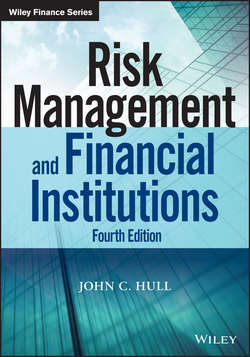Читать книгу Risk Management and Financial Institutions - Hull John C. - Страница 10
На сайте Литреса книга снята с продажи.
CHAPTER 1
Introduction
1.4 ARBITRAGE PRICING THEORY
ОглавлениеArbitrage pricing theory can be viewed as an extension of the capital asset pricing model. In the capital asset pricing model, an asset's return depends on just one factor. In arbitrage pricing theory, the return depends on several factors. (These factors might involve variables such as the gross national product, the domestic interest rate, and the inflation rate.) By exploring ways in which investors can form portfolios that eliminate exposure to the factors, arbitrage pricing theory shows that the expected return from an investment is linearly dependent on the factors.
The assumption that the ε variables for different investments are independent in equation (1.3) ensures that there is just one factor driving expected returns (and therefore one source of systematic risk) in the capital asset pricing model. This is the return from the market portfolio. In arbitrage pricing theory there are several factors affecting investment returns. Each factor is a separate source of systematic risk. Unsystematic (i.e., diversifiable) risk in arbitrage pricing theory is the risk that is unrelated to all the factors.
